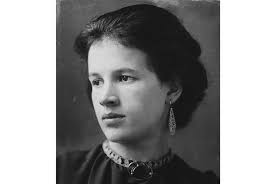Amy Licence, also the author of Living in Squares, Loving in Triangles, about the Bloomsbury group, has form for writing about late 19th and early 20th century European bohemians, my favourite topic. She has a real talent for telling stories about these three women whose lives overlapped, but never actually physically intersected.
By choosing the partners of three major artists of the time—Ida Nettleship’s husband, painter Augustus John; Sophie Brzeska’s partner, sculptor Henri Gaudier-Brzeska; and Fernande Olivier’s lover, Picasso—Licence tells the story of the art and culture of the early 20th century through the lives of these women in unusual and unique relationships.

Ida Nettleship John (1877-1907)
I share her fascination with the possibility that the three women’s paths may have crossed in Paris:
Sophie, Ida and Fernande share so many friends and locations that it is tempting to speculate on their proximity; perhaps they followed a similar route through the Luxembourg Gardens or met mutual acquaintances in the same Montparnasse Café.
Gertrude Stein could have been strolling past them with her partner, Alice B. Toklas; Hadley and Ernest Hemingway could have been dining at the next table.

Sophie Gaudier-Brzeska (1873-1925)
Licence bases her stories on solid research, and her descriptions of the buildings and neighbourhoods that these women inhabited come alive. She must have visited them personally to get the feel for the physical space surrounding her three heroines. Never underestimate the value of primary research.

Fernande Olivier (1881-1966)
For me, it was a delight to see some of my writers—Stein, Roger Fry—appear, along with side characters I always wanted to know more about—artists Nina Hamnett and Gwen John, for example. And I felt the spirit of my John Quinn, Irish-American lawyer and collector of Augustus and Gwen John, as well as Gaudier-Brzeska, hovering in the background, supporting their work.
In a few spots, there is perhaps too much detail about the women’s extended families. Always interesting, but with so many fascinating characters, it’s hard to keep up.
Overall, a great read about three ‘extraordinary’ women in interesting circumstances. Who needs fiction?!
Bohemian Lives: Three Extraordinary Women: Ida Nettleship, Sophie Brzeska, Fernande Olivier, by Amy Licence (Amberley Publishing, 2017; £18.99)
Manager as Muse explores Scribner’s editor Maxwell Perkins’ work with F. Scott Fitzgerald, Ernest Hemingway and Thomas Wolfe and is available on Amazon in both print and Kindle versions.
To walk with me and the ‘Such Friends’ through Bloomsbury, download the Virginia Woolf and the Bloomsbury Group audio walking tour from VoiceMap.

